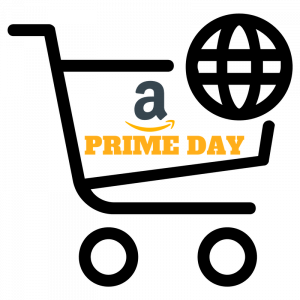Now that Prime Day is long gone and the dust has settled, we’re eager to share some of this year’s results, and we hope you’re curious to see what’s changed in its aftermath.
The much-awaited Prime Day 2017 event has come and gone. We hope you’ve joined the Prime Day bonanza and reaped the rewards, but if you haven’t taken part in it yet, here are a few reasons to reconsider. Behold our Prime Day 10 take-away list:
1. This Prime Day Beat Them All
As expected, Prime Day 2017 dwarfed all previous Amazon sales days, including Prime Days, Black Fridays and Cyber Mondays. Retail Insider claims there were 34,000 more promos than in 2016 on Amazon.com -that’s nearly double-, and that sales rose by 15% to $630 million on Tuesday alone.
Overall, estimated sales for the past three events look something like this. Note that the bulge to the right of every bar indicates the level of US sales as a portion of global sales.
2. Promos Prevailed
The 10 best-selling products were a mixed lot of brands. They were mainly Amazon’s own products, but pressure cookers and DNA test kits also found their way to the top 10. The most successful promos were for the Rumba 652 Robotic Vacuum Cleaner and the Bose Soundlink Mini II.
3. Kitchen Products Sold the Most
Besides selling hundreds of thousands of units of the Instant Pot 7-in-1 Pressure Cooker, Amazon reportedly grossed $60 million from kitchen items on the day. In fact, it sold 70 times more through promos than it did for the same products the day before.
4. Discounts Mattered
Discounts topped 70%, but most customers were interested in items with prices 30%-35% off. Items with discounts ranging from 20% to 25%, however, didn’t seem to capture their interest. The average discount was 23% on Amazon.com.
5. Third-Party Sellers Ruled
As always, Amazon sold more of its own products than sellers’, and its share is growing. But even so, the number of marketplace units doubled this year, according to Internet Retailer.
First-party sellers, whose products are ‘Shipped and Sold by Amazon’, had around 40,000 fewer promos than third-party sellers, and this showed. They sold in high volume, but mostly items under $10.
6. Conversion Rates Surged
Internet Retailer reports that Amazon.com’s traffic increased by half on Prime Day, and that conversion rates peaked at 18.6%, with 160 billion clicks made on Tuesday. The figures include online browsing only, without app visits. The average number of products purchased was also higher, now closer to 3 per customer.
7. Google Text Ads Paid Off
The surge in Amazon.com site visits led to a rise in impression shares for Google Text Ad Search Partners on phones and tablets, as well as desktops. However, shopping carts were slightly smaller than usual.
Phones were the devices customers used the most in terms of conversion rates for paid searches, and tablets were only slightly more relevant than desktops. However, according to Search Engine Land, the average value of an order placed via mobile phone was smaller than usual for non-brand Google text ads, though the sheer scale of the traffic raised overall sales.
8. Amazon’s Servers Coped Well
Despite having an issue with multiple discounts applied to the same order, a brief slowdown on Monday, and a return of the old add-to-cart glitch, Amazon managed to handle the extra traffic quite well.
9. Amazon is Going Global
Amazon Prime Day’s growth rate of 60% was largely due to a sharp rise in interest from customers outside the USA. Top-selling items in Germany and the UK were digital products and devices for first-party sellers, while Canadians rushed to buy electronics, video games and outdoor products, and French buyers spent millions of euros on PCs.
10. Amazon Prime Keeps Recruiting
Amazon is notoriously secretive about the number of Prime Members it has, but it’s safe to say it’s a number somewhere in the 8-digit ballpark. It’s also clear that there are more Prime Members than non-member buyers.
Consumer Intelligence Research Partners (CIRP) and Cowen & Co. estimated the number at about $80 million this year. As for 2016 and 2015, the estimates said 63 million and 44 million, respectively. The trend looks something like the image below, and it suggests that we could be looking at 9-digit Amazon Prime membership figures next year.
So, we look forward to seeing what Amazon has in store for the world on Prime Day 2018. Hopefully, all 13 participating countries will jump in with more deals, and sellers looking to expand internationally will be there to seize the moment.
